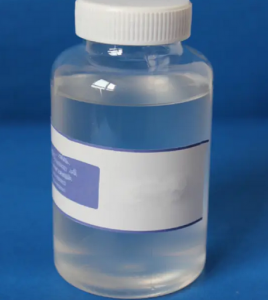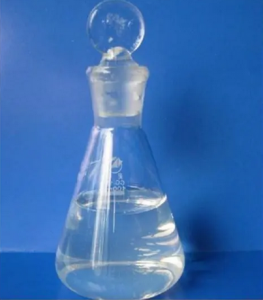

Name: Sodium bicarbonate CAS No.: 144-55-8 Appearance: White powder or opaque monoclinic system fine crystals Molecular formula: CHNaO3 Molecular Weight: 84.01 Melting point:>300 °C(lit.) PACKAGE:25KG/BAG

Name: Dichroromethylvinylsilane CAS number: 124-70-9 Molecular formula: C3H6Cl2Si Molecular weight: 141.07 EINECS number: 204-710-3 Mol file: 124-70-9.mol

Name: Vinyltrimethylsilane CAS number: 754-05-2 Molecular formula: C5H12Si Molecular weight: 100.23 EINECS number: 212-042-9 Mol file: 754-05-2.mol

Name: Ethoxydimethylvinylsilane CAS number: 5356-83-2 Molecular formula: C6H14OSi Molecular weight: 130.26 EINECS number: 226-341-7 Mol file: 5356-83-2.mol

Name: CHLORODIMETHYLPINYLSILANE CAS number: 1719-58-0 Molecular formula: C4H9ClSi Molecular weight: 120.65 EINECS number: 217-007-1 Mol file: 1719-58-0.mol

Name: 1,1,3,3-TETRAMETHYL-1,3-DIVINYLDISILAZANE CAS number: 7691-02-3 Molecular formula: C8H19NSi2 Molecular weight: 185.41 EINECS number: 231-701-1 Mol file: 7691-02-3.mol

Dear Customer, We would like to take this opportunity to thank you for your kind support all this while. Please kindly be advised that our company will beclosed from JAN 26th~ Feb 04th , in observance...

Propylene glycol, also known as Propylene glycol, is a colorless transparent viscous liquid with hygroscopicity. It can react with acid to form ester, and with alkyl Organosulfate or halohydrocarbon to form ether. Miscible in water, acetone, ethyl acetate, and chloroform, soluble in ether. Soluble essential oil, but not miscible with Petroleum ether and paraffin. Stable for heat and light, more st...

Differences in traits The chemical Molecular formula of sodium citrate is Na3C6H5O7 · 2H2O, also known as sodium citrate and sodium citrate, which is an organic compound in the form of colorless rhombic columnar crystals, stable in air, soluble in water and glycerin, and slightly soluble in ethanol. The aqueous solution is slightly alkaline and has a refreshing taste. When heated to 100 ℃, it beco...

Citric acid is the first organic acid, soluble in water, is a natural preservative and food additive. According to the different water content, it can be divided into monohydrate citric acid and anhydrous citric acid. Due to the physical properties, chemical properties, derivatives properties, is widely used in food, medicine, daily chemical industry and other most important organic acids. Because...

Natamycin, also known as pimamycin or natamycin, was first isolated from Streptomyces natale in 1955 and its activity is much better than that of sorbic acid. In June 1982, the US FDA officially approved Natamycin as a food preservative. Antibacterial mechanism Natamycin relies on its lactone ring structure to interact with sterol compounds on the fungal cell membrane, forming antibiotic sterol co...

Introduction:Chlorpyrifos,chemically known as O,O-diethyl-O-(3,5,6- trichloro-2-pyridyl) thiophosphate, with the molecular formula C9H11Cl3NO3PS, is a white crystalline substance with a slight mercaptan odor. It is a non absorbable broad-spectrum insecticide and acaricide with high volatility in the soil. Features: 1. It has a triple effect of gastric toxicity, contact killing, and ...

History Nisin is also known as Nisin peptide. In 1947, A.T.R.Mattick prepared this polypeptide from the fermentation of Streptococcus lactis and named it Nisin; In 1951, Hiish et al. first applied it to food preservative, successfully controlling cheese putrefaction caused by Clostridium botulinum. A commercial product called Nisapin was launched in Britain in 1953; In 1969, the FAO/WHO recognized...
 online service
online service +8613866722531
+8613866722531 pweiping@techemi.com
pweiping@techemi.com pweiping
pweiping +8613866722531
+8613866722531